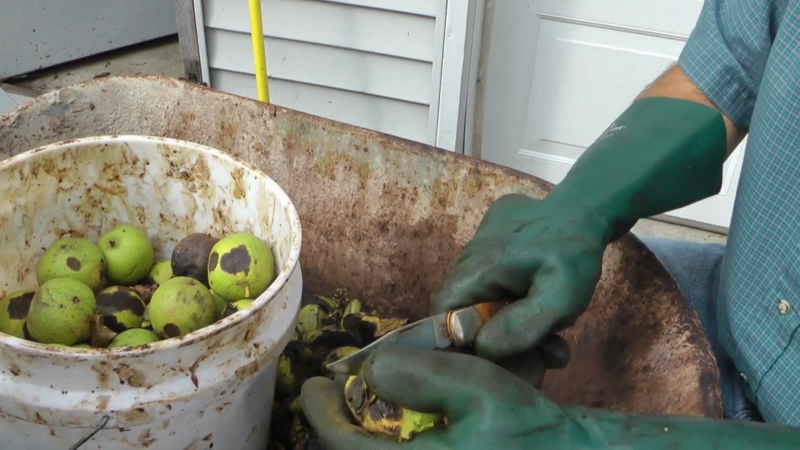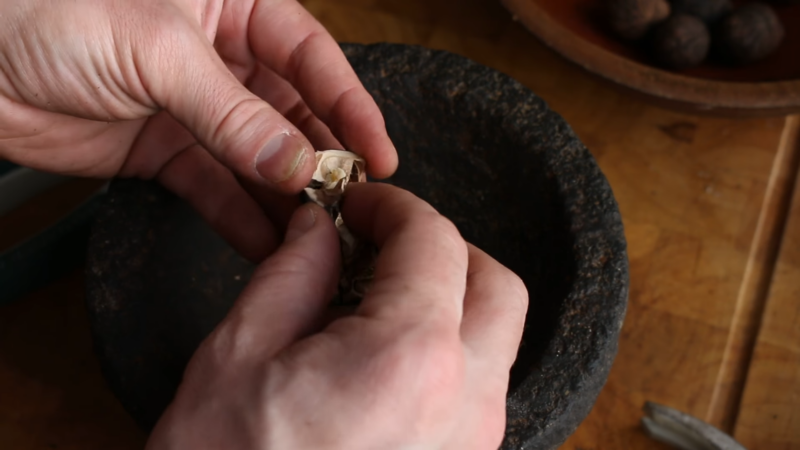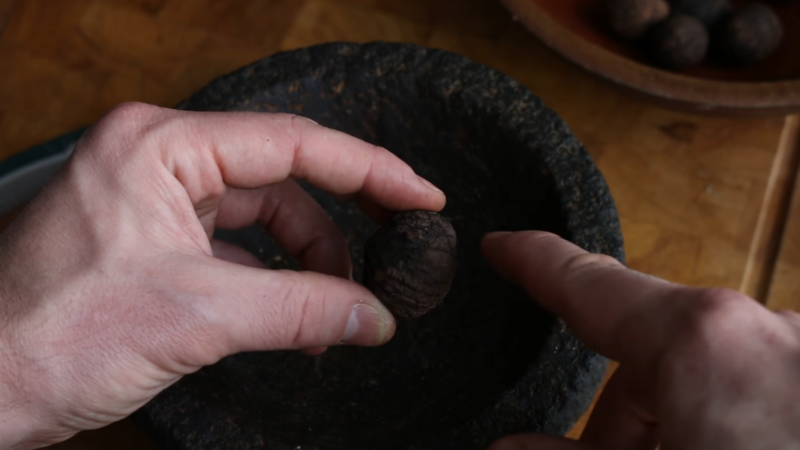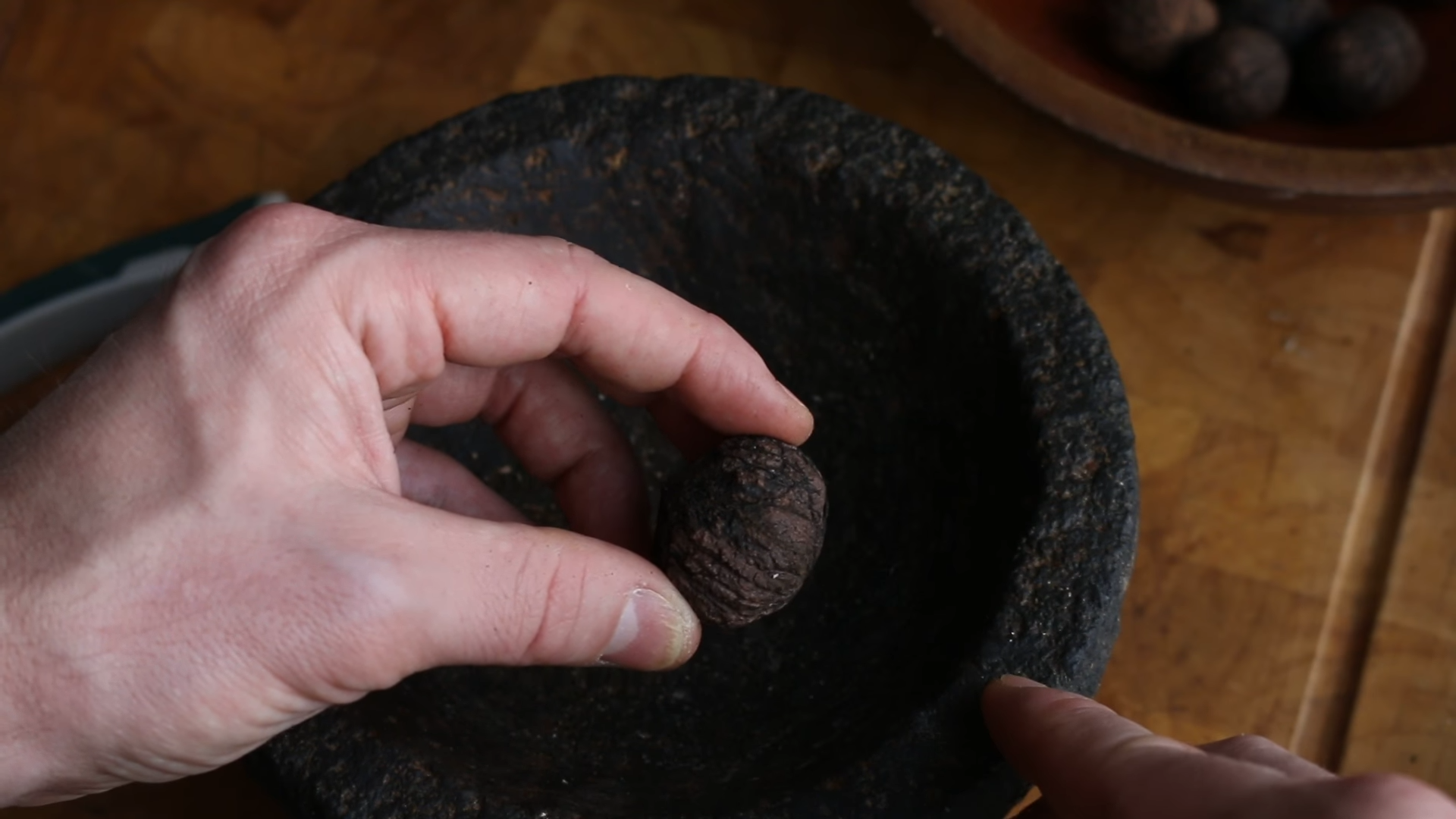Black walnuts, known for their robust flavor and nutritional benefits, differ significantly from the more commonly known English walnuts.
With a rich history and cultural significance, they have been cherished in various cuisines and traditional practices.
Before we can cook these, we must know where to look for them, right?
Today, we want to talk exactly about that.
Harvesting

Harvesting black walnuts begins in early October when the nuts are ripe and ready.
Identifying ripe walnuts is crucial; look for nuts with a green to yellowish hue, often with darkened spots indicating maturity.
These nuts fall to the ground, making them easy to gather.
There are various methods for gathering walnuts. The manual collection is straightforward; simply pick the nuts off the ground.
For larger batches, using a Nut Wizard—a tool that rolls over the ground and picks up nuts—can be highly efficient.
Essential tools and equipment for harvesting include gloves to protect your hands from the black staining hulls, sturdy boots for navigating uneven ground, and a large plastic tub to collect the nuts.
Gathering black walnuts can be a rewarding activity, connecting you with nature while securing a supply of this nutritious nut.
Ensure you wear appropriate protective gear, as the outer hulls can be messy and potentially irritating to the skin.
With proper timing and the right tools, harvesting black walnuts can be a straightforward and enjoyable process.
Processing

Processing black walnuts involves several steps, starting with removing the hulls.
The hulls can be left to soften naturally by placing the nuts in a pile and allowing them to sit for a few weeks. The process helps in making the hull removal easier.
For larger batches, consider using boots to stomp on the nuts or a corn sheller designed to handle tougher hulls.
Once the hulls are removed, the nuts must be cleaned. It involves washing off the black, sticky goop that coats the shells.
Place the hulled nuts in a large tub of water and swish them around to remove any remaining debris. Discard any nuts that float, as they are likely to be empty or rotten.
Properly cleaned nuts will sink and feel heavy. The cleaning process ensures that no residual hull material remains, which can affect the flavor and longevity of the nuts.
After cleaning, rinse the nuts thoroughly with fresh water to remove any remaining black residue.
Drying and Storing Black Walnuts
Drying and curing black walnuts is crucial for long-term storage and maintaining their quality.
There are various methods for drying walnuts. Using a fan or dehydrator can speed up the process, ensuring even drying.
Alternatively, nuts can be spread out on screens or placed in cardboard boxes in a well-ventilated area. Ensure that the nuts are turned regularly to promote uniform drying.
Proper storage techniques are vital to keep the nuts dry and protected from pests like squirrels. Store the dried nuts in a cool, dry place with good ventilation.
Long-term storage options include:
- Refrigeration
- Freezing
- Vacuum sealing
Refrigeration and freezing are particularly effective in preventing the nuts from becoming rancid and extending their shelf life.
Cracking

Cracking black walnuts can be challenging due to their hard shells. However, several tools and techniques can make this task more manageable.
Recommended tools include:
- Molcajete
- Metal snips
- Homemade nut picks
These tools help in breaking the tough shells and extracting the meat.
Using a hammer or table vice is a common technique. Place the nut on a hard surface and gently tap it with a hammer, or use a table vice to apply steady pressure.
Aim to achieve whole quarters of nutmeat by focusing on cracking the shell without shattering the nut inside.
Cooking with Black Walnuts
Black walnuts have a strong, earthy flavor that makes them a unique addition to various dishes. Their distinctive taste is ideal for:
- Baked goods
- Granola
- Yogurt
- Ice cream
Basic recipes include black walnut butter, which can be spread on toast or used in baking; Russian tea cookies, offering a delightful crunch; and black walnut pie, a rich, nutty dessert.
For advanced culinary uses, consider black walnut miso, adding depth to soups and sauces, or seasoning lamb with black walnuts for a gourmet twist.
To enhance the flavor of stored nuts, lightly toast them before use. This revives their natural oils and intensifies their taste.
Always check stored nuts for rancidity before using them.
Creative Uses for Black Walnuts
Beyond culinary uses, black walnuts offer various creative applications. Green walnuts can be utilized for making condiments and liquors like nocino, a traditional Italian walnut liqueur.
The hulls are valuable for natural dyes and ink, providing rich brown hues for textiles and art.
Environmental considerations include being mindful of juglone toxicity, a compound in black walnut trees that can inhibit the growth of certain plants.
Properly managing walnut by-products ensures safe and beneficial use without adverse effects on the environment.
The Bottom Line
From harvesting to creative culinary uses, black walnuts are a versatile and nutritious addition to any pantry.
Embrace the unique flavors and benefits of black walnuts and explore the many ways they can enhance your dishes.

